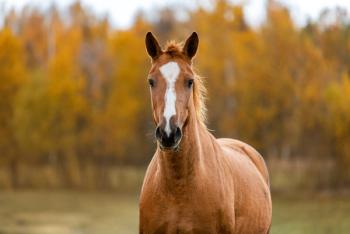
- dvm360 April 2019
- Volume 50
- Issue 4
The future of veterinary medicine
Lying awake in the wee hours of the morning, Bo Brock, DVM, considered the future of veterinary medicine. Luckily, he thinks the future is looking pretty bright.
February 11, 2019, was a Monday. I know this because our entire family had been anxiously awaiting this day for almost a year, because, at 7 a.m., veterinary residency match posting would be revealed.
My daughter Abbi (large animal surgery specialty) and son-in-law Zach (radiology specialty) were waiting to find out if they matched at all, and if they did, whether or not they'd be at the same university. All this after spending a year apart during their internships-Abbi in California and Zach in North Carolina.
As is often the case in the life of a veterinarian, I was called out to do a colic surgery that night and didn't get home until 5 a.m., just two hours before residencies were supposed to be posted. Naturally, I couldn't sleep. During those two hours awake in bed, I considered this profession that has blessed me so deeply and all the things that have changed in the last 30 years.
The first thing that came to mind was 1988. I was a fourth-year veterinary student at Texas A&M, and a wealthy donor gave an ultrasound machine to the veterinary school. It was a really big deal; the technology was very new and hadn't been used much in veterinary medicine. When the ultrasound machine arrived, it was as big as a Volkswagen. It had a screen on it about the size of a large iPhone, about four shades of gray and cost $450,000.
I was on clinics and all we did was stand there and watch the clinician rub the probe on a digital flexor tendon for hours. He didn't know what he was looking at and neither did we. This went on for days. I vividly remember thinking it was an incredible waste of my time and there was no way I was ever going to be able to afford one of those things in West Texas.
Now our clinic has four of them with a billion shades of gray, all in a package about the size of laptop. We have radiograph units that can take a shot and deliver a detailed, beautiful image in three seconds. No dipping vat and waiting 24 hours to dry. We also have an MRI machine that's the size of a trailer house and are looking into getting a CT scan.
In 30 short years, a mixed animal veterinary clinic in the middle of nowhere has better imaging and diagnostic capabilities than any institution in the entire world had in 1988, and we know how to use them to benefit animals like never before.
I went on thinking about the students of today.
We have a large number of students that come through our clinic each year and have for 25 years. Just like when I was a kid, some of them are lazy and entitled, but most of them work like sled dogs and are so eager to learn that we have to slow them down.
I thought about the education process and how learning has changed with the advent of computers and the Internet. I look at new veterinary schools and how they are making an effort to shift the emphasis off perfect scholastics to common sense experience combined with didactic ability. Over the years, the emphasis on perfect grades as the major criteria for choosing future veterinarians has made the application pool characteristic change considerably since the early to mid ‘80s when I applied.
I thought about how much surgery and medicine has advanced since I became a doctor. In the early ‘80s, there were only a handful of veterinarians who had ever even stuck a scope in a horse joint. They were ridiculed by their predecessors who said the arthroscope would never be as good as or replace an arthrotomy. I look at the medication and medical treatments that we use in our practice every day that were unheard of in 1990.
As I waited for 7 a.m. to arrive, I decided that we are in a good place here in the veterinary world. We are making changes to evolve to the needs of modern-day clients. Our profession is full of caring people who are full of common sense. We are innovative and have found a use for everything from shirt buttons to use as a stent to hold a laceration together to highly advanced medicated implants in the very delicate eye for uveitis.
I haven't quit smiling since 7 a.m. that Monday morning. Abbi and Zach both matched at Texas A&M, so they will be together and learning from some of the brightest veterinarians in the world.
We veterinarians are a fortunate lot. I hope you'll take a little time today to look at all the good things that are happening in our world and feel happy to be part of it.
Articles in this issue
over 6 years ago
Commentary: Alvins trip to the veterinarianalmost 7 years ago
New initiative aims to spread heartworm awareness, actionalmost 7 years ago
Laser therapy dosing explainedalmost 7 years ago
Can't we just sit tight sometimes?almost 7 years ago
dvm360 Hospital Design Competition announces 2019 winnersalmost 7 years ago
Reexamining the early spay-neuter paradigm in dogsalmost 7 years ago
Dangerous new tick species migrating to North Americaalmost 7 years ago
Petplan gives North American awards at VMXalmost 7 years ago
Letter to dvm360: More options for intestinal parasite controlNewsletter
From exam room tips to practice management insights, get trusted veterinary news delivered straight to your inbox—subscribe to dvm360.




